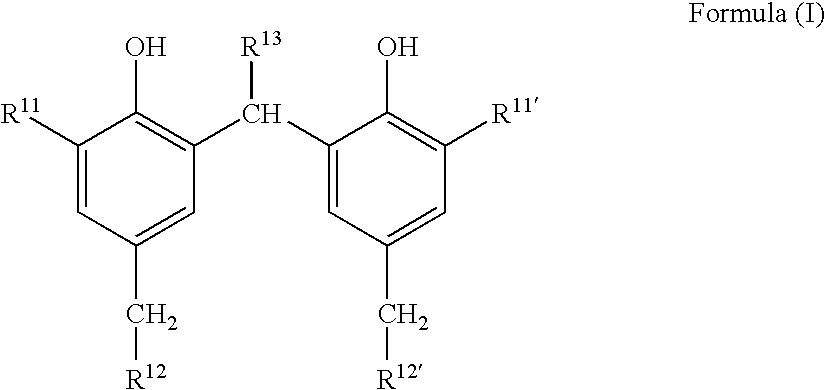Photothermographic material
a technology of photothermographic materials and materials, applied in the field of photothermographic materials, can solve the problems of image graininess liable to deterioration, and achieve the effects of low dmin, excellent image storability, and high sensitivity
- Summary
- Abstract
- Description
- Claims
- Application Information
AI Technical Summary
Benefits of technology
Problems solved by technology
Method used
Image
Examples
example 1
(Preparation of PET Support)
1) Film Formation
[0504]A PET having an intrinsic viscosity IV of 0.66, which was measured in a 6 / 4 mixture (weight ratio) of phenol / tetrachloroethane at 25° C., was prepared from terephthalic acid and ethylene glycol by a common procedure. The PET was converted to a pellet, dried at 130° C. for 4 hours, melted at 300° C., extruded from a T-die, and rapidly cooled to prepare an unstretched film.
[0505]The film was stretched 3.3 times in the longitudinal direction at 110° C. by rollers with different peripheral speeds, and then stretched 4.5 times in the horizontal direction at 130° C. by a tenter. The stretched film was subjected to thermal fixation at 240° C. for 20 seconds, and relaxed by 4% in the horizontal direction at this temperature. Then, the chuck of the tenter was slit, the both ends of the film were knurled, and the film was rolled up into 4 kg / cm2, to obtain a roll having a thickness of 175 μm.
2) Surface Corona Treatment
[0506]Both surfaces of t...
example 2
>
[0625]Preparation of a coating liquid 8 for a non-photosensitive layer S was carried out in the same manner as the preparation of the coating liquid 1 for a non-photosensitive layer S except that the reducing agent was not added.
>
[0626]Preparation of a coating liquid 9 for a non-photosensitive layer S was carried out in the same manner as the preparation of the coating liquid 1 for a non-photosensitive layer S except that 153 g of the dispersion of the reducing agent R1 was used instead of the combination of 107 g of the dispersion of the reducing agent R1 and 46 g of the dispersion of the reducing agent R2 (the mass ratio of R1 / R2 is 70 / 30).
>
(i) Preparation of Dispersion of Nucleating Agent
[0627]Preparation of a dispersion of a nucleating agent was carried out in the same manner as in the preparation of the dispersion of the reducing agent in Example 1 except that the nucleating agent shown in Table 2 was used in place of the reducing agent and that the amount of water added was c...
example 3
(Production of PET Support)
[0639]An undercoated support was produced in the same manner as the production of the PET support in Example 1 except that both surfaces of the support were coated with the undercoat coating liquid formulation (1) to have a wet coating amount of 6.6 ml / m2 (per one surface) and the coating liquid was dried at 180° C. for 5 minutes instead of coating one surface of the support with the undercoat coating liquid formulation (1) and coating the other surface with the undercoat coating liquid formulations (2) and (3).
(Back Layer)
[0640]Although the photothermographic materials of Example 1 had back layers, photothermographic materials of Example 3 did not have back layers.
(Image-Forming Layer, Intermediate Layer and Surface Protective Layer)
1. Preparation of Materials for Coating
>
[0641]To 1421 ml of distilled water was added 4.3 ml of a 1 mass % solution of potassium bromide. Further, 3.5 ml of 0.5 mol / L sulfuric acid, 36.5 g of gelatin p...
PUM
| Property | Measurement | Unit |
|---|---|---|
| temperature | aaaaa | aaaaa |
| temperature | aaaaa | aaaaa |
| diameter | aaaaa | aaaaa |
Abstract
Description
Claims
Application Information
 Login to View More
Login to View More - R&D
- Intellectual Property
- Life Sciences
- Materials
- Tech Scout
- Unparalleled Data Quality
- Higher Quality Content
- 60% Fewer Hallucinations
Browse by: Latest US Patents, China's latest patents, Technical Efficacy Thesaurus, Application Domain, Technology Topic, Popular Technical Reports.
© 2025 PatSnap. All rights reserved.Legal|Privacy policy|Modern Slavery Act Transparency Statement|Sitemap|About US| Contact US: help@patsnap.com



